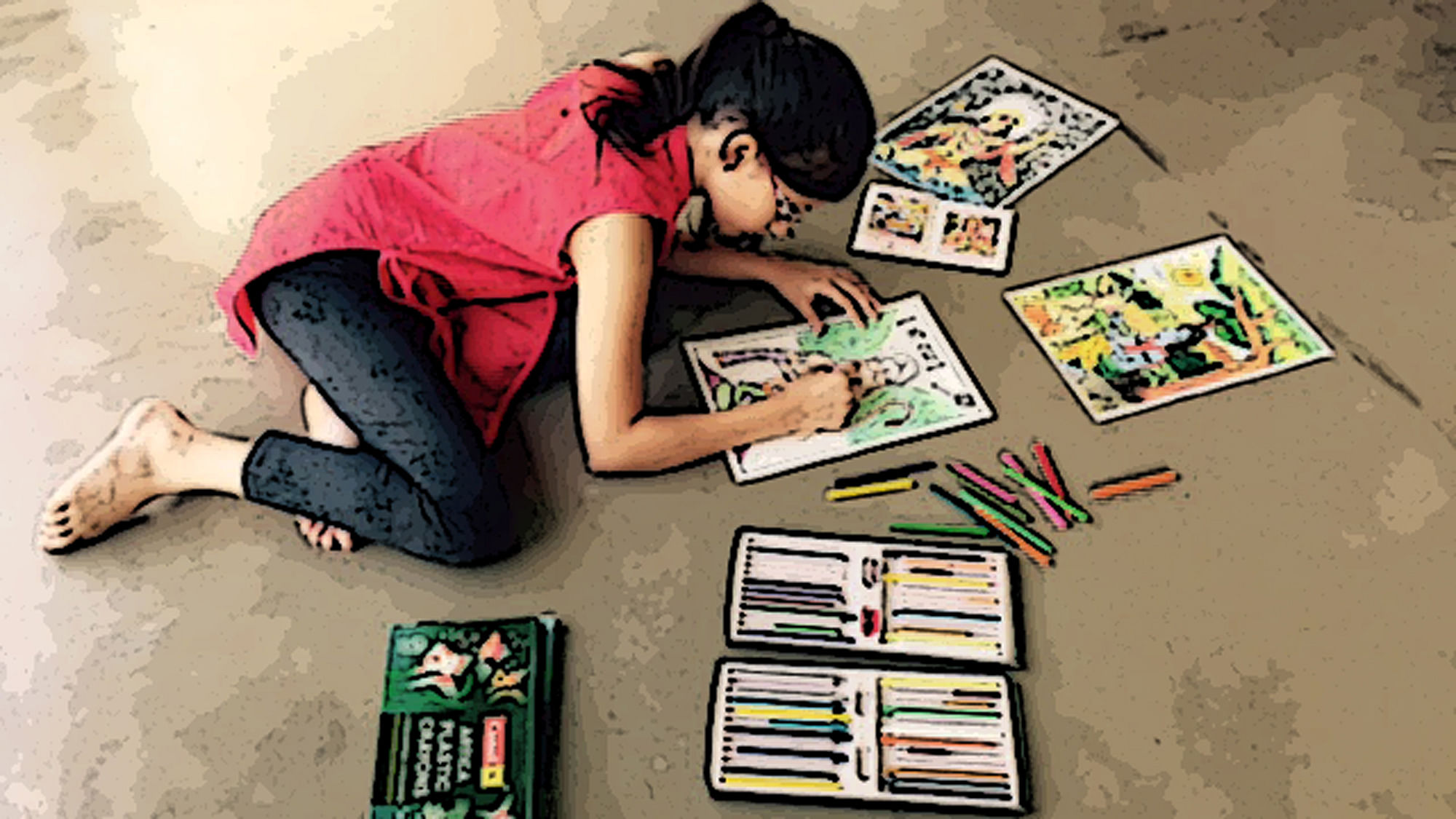How Two Little Girls Mastered Mythology and Wrote a Picture Book!
Two little girls, aged 6 and 11, have written a first of its kind, pictorial documentation of Hindu scriptures.

advertisement
Little Isha was no different from most six-year-olds. She’d rather catch her cartoons on TV than the scriptures her mom would recite to her in hopes of teaching her some mythology.
Mom Priya Adhyaru Majithia knew she had to up her game if she wanted her daughter to enjoy Indian mythology as much as she had as a kid. So she decided to narrate her favourite Sundarkanda in the form of little stories – and voila! Isha not only enjoyed listening to the stories of Hanuman and his vanar sena in Lanka – but also started painting images to depict them.
This March, the now 10-year-old has completed 35 paintings based on the 60 stanzas of the scripture.
How Parents and Children Bonded Over Ancient Tales
Over the last four years, the Ahmedabad based mother-daughter duo has meticulously turned every verse of Sundarkanda, the fifth section of the Hindu epic Ramayana, into a painting.
While Priya told her daughter the story in Gujarati, Isha painted what she imagined the story would unfurl like. “We enjoyed these ancient tales in our childhood so I was determined to pass some of it on,” says Priya, a writer and an art curator.
Interestingly, what took Isha’s fancy also intrigued cousin Angana (11), who started doing paintings based on the Hanuman Chalisa. Angana has completed a series of 40 paintings – ably supported by her mother and Priya’s sister, Parthivi Adhyaru-Shah.
Over the years, this exercise of storytelling and painting has strengthened the mother-daughter bond in many ways.
The parents helped the girls do abundant research – especially on Hanuman – the monkey god present in both the chosen mythologies.
From telling the stories in Gujarati (which is their mother tongue) to taking them to Camp Hanuman, a famous temple of the deity in Ahmedabad, the parents backed them every step of the way.
International Acclaim for the Children
The series of paintings, using crayon and acrylic colours and ink on paper, have found appreciation by the Hindu University of America and the artist circuit of Ahmedabad.
Veterans like Amit Ambalal, Natu Parikh and art curator Anil Relia have complimented the children’s skills – the clarity of forms, fresh imagination and vibrant use of colours.
There will be an exhibition of the paintings soon, followed by the launch of the books.
Isha and Angana shyly tell us that they have received acknowledgement from the Indian Prime Minister and the Gujarat chief minister for their art.
“But I am super excited about my next set of paintings now. It will be the cityscapes of the places we have visited across the world,” says Isha.
(Runa Mukherjee Parikh has written on women, culture, social issues, education and animals, with The Times of India, India Today and IBN Live. When not hounding for stories, she can be found petting dogs, watching sitcoms or travelling. A big believer in ‘animals come before humans’, she is currently struggling to make sense of her Bengali-Gujarati lifestyle in Ahmedabad.)
(At The Quint, we question everything. Play an active role in shaping our journalism by becoming a member today.)